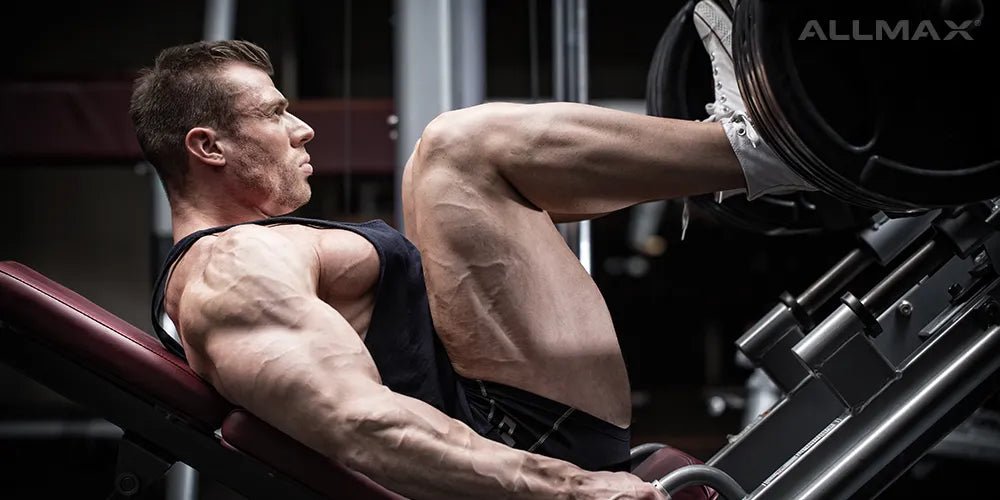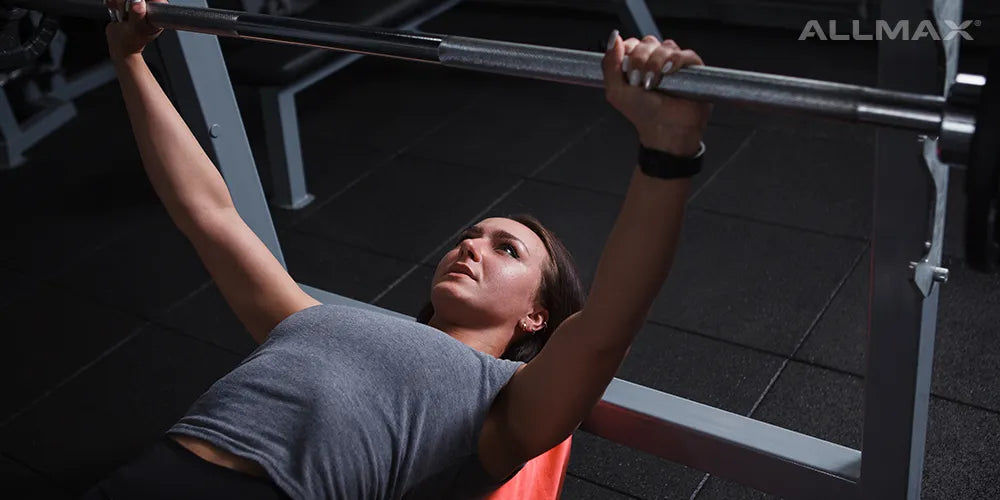Anyone who has trained intensely with weights will have experienced localized muscle pain, often referred to as Delayed Onset Muscle Soreness (or DOMS). Indeed, the pain we experience post training can provide valuable feedback to ensure we feed, rest, and modify our workouts to provoke optimal muscle mass gains. In the following article I will discuss how and why DOMS occurs, why it may be viewed as important, and why we must fully heal our muscles between workouts to take advantage of its muscle growth benefits.
No Pain, No Gain

Unlike the burn of a workout or the deep chronic stabbing pain of an injury, post training muscle soreness, which may occur 24 to 72 hours after training and may last from 2-3 days, is characterized by stiffness, swelling, and strength loss. Often viewed as a sign of a good workout, muscle pain has become an accurate, albeit non-scientific barometer, of whether a target muscle has received adequate stimulation.
AN ABSENCE OF PAIN IN THE DAYS FOLLOWING A WORKOUT MAY REFLECT A LACK OF TRAINING INTENSITY, OR ADAPTATION TO A TRAINING ROUTINE WHICH COULD INDICATE A PLATEAU.Weight training newcomers are especially aware of the searing muscle pain associated with ultra hard workouts; for them, such pain may be so severe that they suspect an injury has occurred. This pain may even have radiated into a joint, giving the impression that connective tissue damage has taken place. But rather than blame their trainer for pushing them too far, and being dissuaded from continuing their training efforts, they must realize that such pain is actually a sign of progress.

Valuable Pain
Without sufficient recovery time between training sessions (it may take 4-5 days before a given muscle group is ready to be trained again), we simply cannot expect to grow larger and stronger. Whenever a muscle is trained intensely, minute muscle tears are created (called muscle micro-trauma), and inflammation occurs. Caused by the excessive lengthening (or eccentric loading) of muscles, rather than the contracting (or concentric) aspect of a rep, DOMS is one symptom of exercise-induced muscle damage – the other being acute muscle soreness, which appears during, and immediately following, training. The major goal of serious trainers is to ensure that our muscles, between workouts, adapt to the imposed training stress to prevent chronic injurious muscle damage and to minimize further soreness. Prolonged soreness following training may reflect a failure to properly recover between workouts.MUSCLE SORENESS CAN BE USED AS A FEEDBACK TOOL TO KEEP US EATING, SUPPLEMENTING AND RESTING ENOUGH SO WE CAN FULLY RECOVER AND GROW.
The most commonly accepted muscle damage theory posits that microscopic ruptures (or lesions) within a target muscle, due to increased tension force and muscle lengthening during eccentric contractions, cause the muscle filaments actin and myosin to separate prior to relaxation, which promotes greater tension within the remaining active motor units. This tension may damage the sarcomere (the basic unit of a muscle).When this happens, pain receptors (nociceptors) contained in muscle connective tissues are stimulated and sensations of pain are felt. But to provoke such sweet pain, and ultimately benefit from it, we must train with increasing levels of intensity.
Break Them Down to Build Them Stronger

Bodybuilding training, done properly, is heavily associated with the production of pain. In fact, many who train for muscle growth specifically seek muscle soreness both during their workouts and in the days following their training. However, only one type of pain will encourage the gains we seek. Indeed, the soreness we experience during our workouts (resulting from lactic acid accumulation, a byproduct of the glucose oxidation process) does not contribute to DOMS. Instead, rather than the lactic acid influenced chemical changes within the muscle, it is the structural changes resulting from actual muscle damage that create the conditions for growth. Though it’s hard to say whether the extent of post-training muscle soreness is an indication of the amount of muscle damage incurred, it is true that a degree of pain does signal an adaptation process during which the muscle changes its structure to prevent further soreness from the same movement (the so-called “Repeated Bout Effect”).
BREAKING DOWN OUR MUSCLES THROUGH INTENSIVE TRAINING RESULTS IN CELLULAR CHANGES THAT STRENGTHEN AND PROTECT MUSCLE FIBERS, SO DOMS, VIEWED IN THIS LIGHT, IS AN INTEGRAL PART OF THE MUSCLE GROWTH PROCESS.
But because our muscles, over time, increasingly adapt to our training efforts to prevent further damage, and pain, we must negate this process by exponentially increasing the intensity of our workouts. This is most easily done by increasing weight lifted, varying reps and sets, adding new exercises, improving technique, or incorporating intensity techniques such as rest/pause and supersets. We have determined what muscle damage is and why it’s needed. The key to ensuring we prosper from it is to bring about the conditions that enable us to fully recover between workouts. By training while our muscles are sore we may become over-trained, and, over time, may regress in our training progress. By speeding the healing process, however, we may shorten the length of time we experience muscle pain and thereby translate muscle micro trauma into muscle-building results. We must tear our muscles down, but we must also build them back up, bigger and stronger.
Effective Recovery For Optimal Growth
Without enough training intensity, and subsequent muscle fiber damage, we cannot grow to our full muscle-building potential; without enough clean calories, quality supplements, and uninterrupted rest and sleep, we cannot fully capitalize on the muscle damage that has occurred. So, one without the other will not cut it. Indeed, intensity of training is the spark that activates muscle growth, but complete recovery is the fuel that sustains the rebuilding process. When seeking proper recovery we must address our nutrition, supplementation and rest needs.
Nutrition

Quality nutrition is the cornerstone of optimal recovery from intensive training: specifically, clean calories from a variety of food groups comprising a 45/40/15 ratio of complex/fibrous carbohydrates, proteins, and fats respectively. While muscle damage will ultimately be repaired through rest and the sufficient intake of food, the healing process will occur more rapidly with a steady supply of muscle building nutrients consumed throughout the day, from first light until bedtime. When eating for recovery, it is best to avoid fatty, simple carb-laden foods and, in particular, those with a high trans-fat component. Trans-fats (hydrogenated unsaturated fatty acids) are formulated to lengthen the shelf life of food products while adding texture and flavor; they are a major contributor to coronary heart disease, high LDL cholesterol levels, and are generally harmful to one’s health. They may also interfere with the processing and assimilation of quality nutrients. Removing them from your diet will significantly elevate recovery from muscle micro trauma.
Supplementation

While whole foods will form the basis of our bodybuilding nutrition regime, supplementation is equally as integral to the repair process and, accordingly, must also be structured into our recovery plan. Whenever we consume whole foods we face a dilemma: we must determine how much of a given food will provide the exact number of calories and grams of nutrient we need. For example, if we require 40g of protein post training, consuming a chicken breast or several egg whites, while excellent protein sources, may not be of sufficient quality to fulfill our needs (various contaminants, and a food’s composition, may alter its nutrient balance). Also, because the consumption of foods may ‘chew’ up our time they may not, in certain circumstances, be convenient and because many foods take an hour or more to fully digest they may not be assimilated as efficiently as a supplement containing the same nutrient balance. Further, by supplementing, we can more precisely apportion the exact ratio of nutrients we need to enhance our recovery rate. For example, immediately post-workout is an ideal time to replenish our muscles and top up our energy stores to kick-start recovery and prepare our muscles for future training sessions. With supplementation we can consume the desired 30-40g of rapidly absorbed protein (in the form of whey isolate) and 30g of high molecular weight carbohydrates (in the form of waxy maize, or other reputable types). With whole foods this process becomes less precise.

To speed recovery from training we must consume quality nutrients that are highly bio-available. With supplements we achieve both objectives. With certain products we can also efficiently improve workout performance, boost the immune system, enhance overall health and well being, elevate testosterone levels, and, in the case of micellar casein consumption, ensure we stay anabolic as we sleep. Without supplements, we would struggle to consume all of the nutrients we need, and there would be uncertainty as to exactly what ratio of nutrients we are taking in. Supplements are therefore essential in repairing training-related muscle damage.
Rest

Along with adhering to solid whole foods nutrition and supplementation plans, we must also, to enhance muscle repair, get at least 7-8 hours sleep per night and rest wherever possible. This also means resting each muscle group for a minimum of three days before training it again (depending on our individual recovery rate – some people may take a week to sufficiently recover between workouts). For protein synthesis to occur we must provide the right raw materials, and the rest needed to facilitate this process. It is an age-old bodybuilding maxim that we do not grow in the gym but, instead, when we are recovering from the rigors of training. Given it is impossible for our muscular and nervous systems to fully recover when we are training or engaging in other physical activities, we must schedule time for complete rest. Only then can the nutrients we have consumed and the trauma we have inflicted on our muscles be converted to solid muscle gains.
Seek and Destroy
Delayed Onset Muscle Soreness (DOMS) may, for beginners, be viewed as problematic; such persistent soreness may cause them to assume they have injured themselves in the process of trying to become stronger and more muscular. For most advanced lifters, however, such pain is, for them, a sure sign that they have sufficiently stimulated their muscles through intensive training protocols. Indeed, to experience optimal bodybuilding progress we must create enough muscle micro-trauma to signal the repair process which, in turn, will, if enough of the right nutrients have been supplied, and sufficient rest has been achieved, prompt a compensatory effect resulting in larger muscles. Training induced pain provides an accurate picture of how hard we have trained our muscles. The harder we train, the more soreness we typically experience in the aftermath. While procuring pain in the gym may be a great way to prompt muscle mass gains, such soreness must be offset with strict attention to proper nutrition, supplementation, and rest. Only then will you come to realize just how important muscle micro trauma is for building a physique that is certainly not painful on the eyes.
Sources
- Cheung, K., Hume, P., Maxwell, L. (2003). Delayed onset muscle soreness: treatment strategies and performance factors. Sports medicine (Auckland, N.Z.) 33 (2): 145–64.
- Hough, T. (1902). “Ergographic studies in muscular soreness”. American Journal of Physiology 1902 (7): 76–92.



